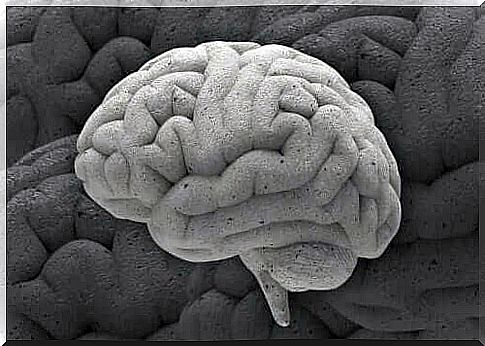Three Fascinating Neuroscientific Cases

An interesting part that many neuroscientific cases have in common is that they often lead to previously unknown knowledge about the brain. Sometimes a disease or symptom offers clues that will improve our understanding of the human mind.
Many neuroscientific cases are noteworthy for the patient’s unique symptoms. The lives of people affected by these unusual conditions are often strange and fascinating at the same time. The really valuable thing we can take away from these cases is observing the human brain in ways that no one has seen before.
The scientific world regards the neurologist Oliver Sacks as one of the most important educators of our time. Although his narrative style and the extraordinary stories he tells about patients sometimes sound like science fiction, they couldn’t be more real. So today we’re going to share three fascinating neuroscientific cases with you.

Three interesting neuroscientific cases
1. reminder
This is one of the most fascinating cases. The patient was a woman in her eighties who had a unique experience in 1979. She was in good health and had fully functional mental faculties. However, she had some hearing problems.
One night she dreamed of her childhood in Ireland. In a dream she heard the music of her past, the traditional songs and typical dances. When she woke up the music was still in her head. She thought that a radio was on or that someone was playing a recording when no one was there. She could hear all the notes perfectly, at a volume high enough to distract her from other things.
Before doctors could do a brain scan, the music began to go away. The music had been playing in her brain for months. Everything seemed to indicate a problem in the temporal lobe associated with feelings of nostalgia. This case suggests that some parts of the brain are storing all of your past experiences as if they were indestructible files.
2. Fascinating Neuroscientific Cases: The Case of Madeline
Madeline was a 60-year-old woman with congenital blindness. That is, she was born blind and had never seen anything with her own eyes. She also had cerebral palsy and involuntary hand movements. Under all these conditions, one would expect her to have severe cognitive delays, but Madeline was a very intelligent woman.
The people around her kept reading to her. As a result, she was cultured and a great conversationalist. She never learned to read Braille because her hands were “useless, godforsaken lumps of dough” in her words. She said they didn’t even feel part of her body.
Still, despite what she believed about them, Madeline’s hands were basically normal. However, for some reason, they weren’t moving properly. Oliver Sacks suggested that because her family did absolutely everything for her, she lost the use of her limbs. Because of this, he started a rehabilitation program with her. And believe it or not, at the end of the treatment, Madeline actually became a sculptor.

3. The man who fell out of bed
In this neuroscientific case, it is a strange disorder called autotopagnosia. It is characterized by the inability to recognize one’s own body parts. A young man had a very strange experience while being hospitalized. He saw a leg on his bed that he said was not his leg. As a result, he tried to pick it up and throw it off the bed. And when he did that, he fell out of bed.
This experience frightened the young man. Because for some reason he believed that his left leg had been amputated from his body and that the leg on his bed could not be his own as a result. The leg startled him. Medics questioned him and since he couldn’t tell anyone where his real leg was, he kept hitting himself and trying to get rid of the strange limb.
Unfortunately, the false identity case has yet to be resolved. Although there are many similar cases in books, no one knows the cause of the problem or how to help people with this disease.









